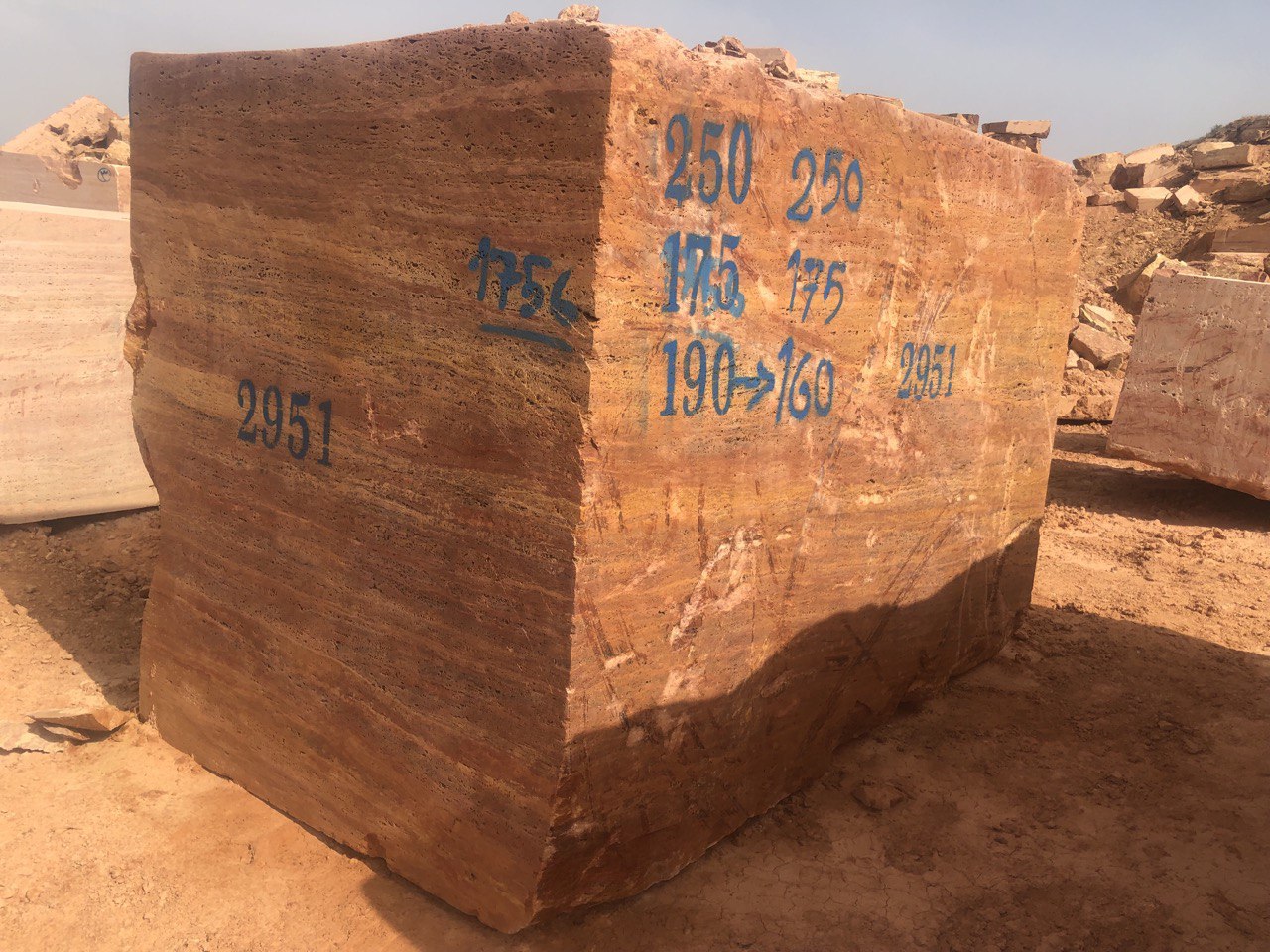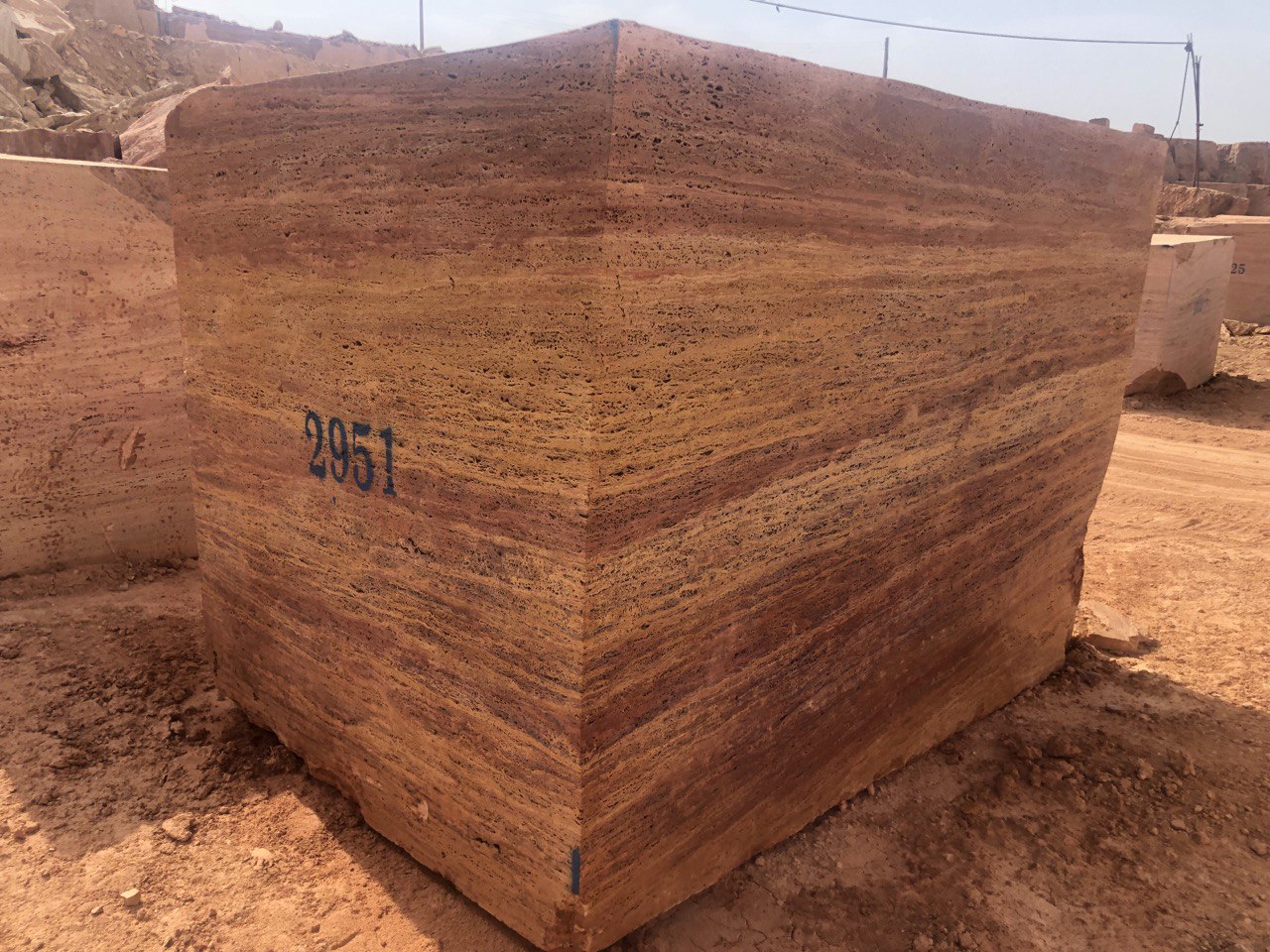
Red Travertine: Nature’s Warmth Embodied in Stone
Natural stone has always held a special place in architecture and interior/exterior design. Among these geological treasures, Red Travertine, with its warm and unique color, creates a magnificent and authentic splendor. This stone is a captivating example of travertines, known for its color spectrum ranging from soft pink to deep red, often accompanied by veins or inclusions of white, gold, or brown.
The Journey of Formation: From Spring to Stone
Red Travertine, like other types of travertine, is a sedimentary limestone characterized by its porosity. It forms over thousands or millions of years through the deposition of calcium carbonate (CaCO₃) from mineral-rich hot springs or calcareous waters (especially near geysers or waterfalls). Its captivating red hue is primarily due to the presence of iron oxides (hematite) during the deposition process. The amount and type of iron impurities determine the intensity and variation of the red color.
Distinctive Characteristics of Red Travertine:
1. Warm and Captivating Color Spectrum: Its most important feature is the red to pink color, which imparts a sense of warmth, energy, luxury, and authenticity to any space. This color is ideal for creating focal points.
2. Unique Porous Texture: Like all travertines, it features natural holes and pores, giving its surface a distinctive, organic texture. These holes can be left natural (“filled” or “unfilled”) or filled with materials like resin or cement (“filled”).
3. Natural and Unique Patterns: Veins, bands, cloud-like formations (“cloud and wind”), and natural color variations create a one-of-a-kind, non-repeating design in every slab.
4. Versatile Finishing Options:
* Polished: Shows high gloss and deep color, suitable for luxurious interiors.
* Honed: Offers a matte, smooth surface with better anti-slip properties; very popular and versatile.
* Sawn: Features a rough, natural surface, ideal for outdoor environments or rustic designs.
* Tumbled: Has smoothed and rounded edges, creating an antique or traditional feel.
* Bush-Hammered: Provides a very rough, textured surface with excellent anti-slip properties, perfect for outdoor steps and areas.
5. Good Durability: Red Travertine generally offers medium-to-good hardness and compressive strength, making it suitable for most construction applications. Its frost resistance is usually good (especially if the holes are filled).
6. Thermal Insulation: Due to its porosity, it has relatively good thermal insulation properties.
Striking Applications of Red Travertine:
1. Building Facades: Exterior cladding with Red Travertine (often honed, sawn, or bush-hammered) gives a building a warm, luxurious, and distinctive appearance. Its relative weather resistance makes it suitable for facades (with proper sealing).
2. Flooring and Stairs: Highly popular for interior spaces like grand lobbies, hallways, and stairs (using honed finishes to reduce slipperiness). Also used outdoors in patios and courtyards with appropriate finishes.
3. Wall Cladding: Creates accent walls or full feature walls indoors (living rooms, reception areas, restaurants) and outdoors (patios, garden walls).
4. Fireplace Surrounds: An ideal choice for framing a fireplace, creating perfect harmony with the fire’s color and warmth.
5. Tabletops and Kitchen Counters: Large slabs of polished or honed Red Travertine make stunning dining tables or kitchen islands in modern, luxurious kitchens.
6. Interior Decor: Used for sinks, washbasins, mirror frames, column bases, and other decorative elements.
Advantages of Using Red Travertine:
* Unique Natural Beauty: Each piece is a natural work of art.
* Enhanced Visual Value & Sense of Luxury: Red consistently evokes warmth, energy, and grandeur.
* Variety in Design & Finish: Adaptable to various architectural styles, from classic to modern.
* Longevity & Durability: With proper maintenance, it retains its beauty for years.
* Suitable for Indoor and Outdoor Use (with correct finish and sealing choices).
Considerations and Maintenance:
* Porosity: This is the most crucial point. Red Travertine is highly porous and prone to staining (especially by oils, colored drinks, and acidic substances).Initial and regular sealing (every 1-2 years, depending on usage and sealer type) is ABSOLUTELY CRUCIAL.
* Acid Sensitivity: Like all calcareous stones, it is vulnerable to acids (vinegar, lemon juice, some cleaners), which can etch or dull the surface. Avoid contact and use pH-neutral cleaners specifically designed for calcareous stone.
* Anti-Slip Properties: For flooring and stairs, always choose a finish with sufficient friction coefficient (like honed or bush-hammered). Polished stone can be dangerous in these areas.
* Natural Variation: Color and pattern can vary between slabs and even within a single slab. This is part of the stone’s natural beauty and should be considered during selection and installation.
Conclusion:
Red Travertine, with its warm, energetic color and unique natural texture, is an exceptional choice for architects, designers, and homeowners seeking to create a distinctive, luxurious, and nature-infused space. From striking facades to warm flooring and accent walls, this stone creates unparalleled elegance. However, awareness of its high porosity and the critical need for proper sealing and maintenance is key to preserving the beauty and longevity of this valuable stone. If you seek a stone with strong character and warm color and are prepared to care for it, Red Travertine can be a phenomenal choice.



